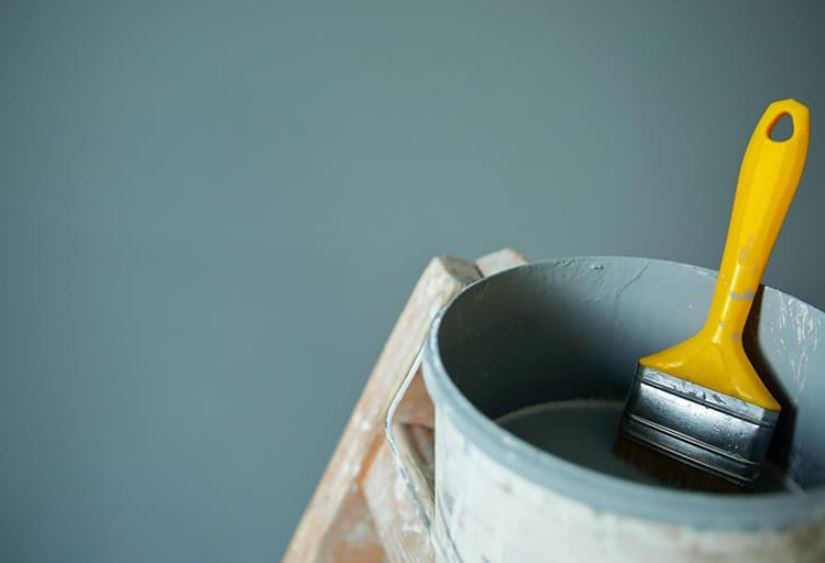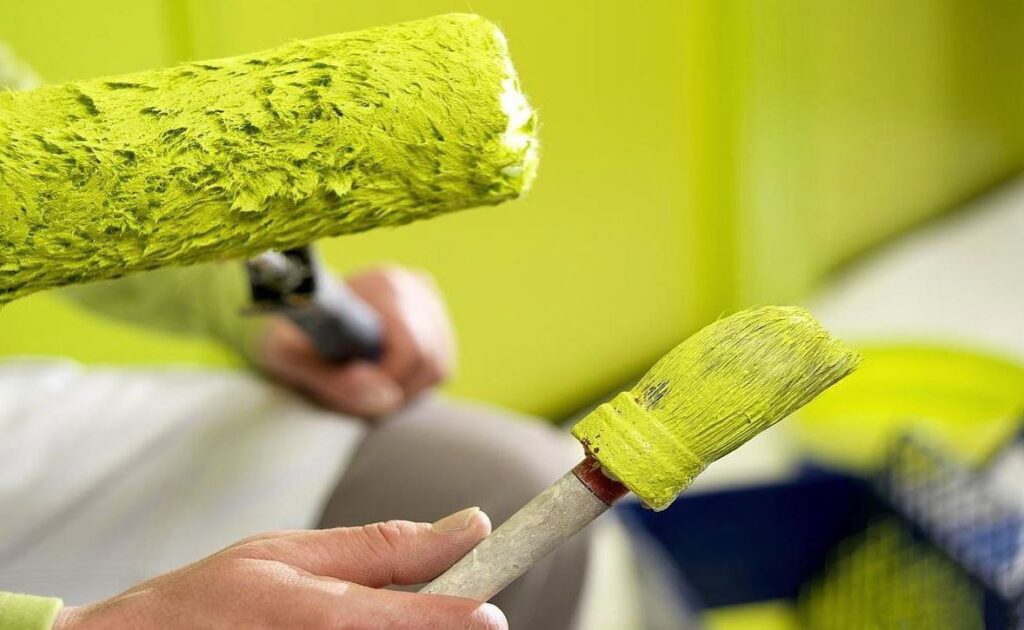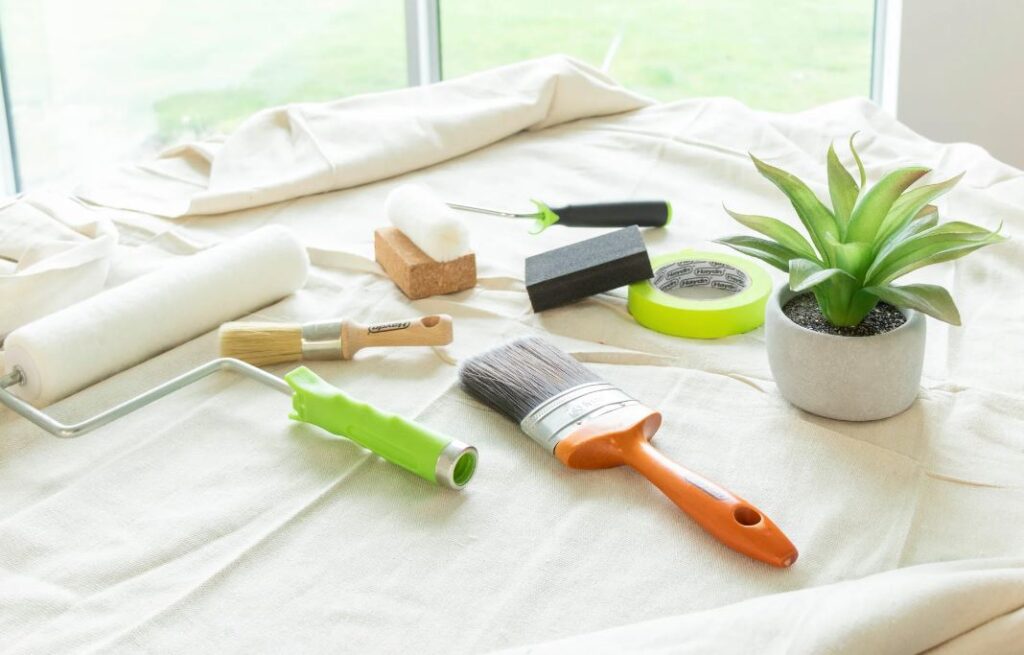From the rustic murals of ancient civilizations to the vibrant canvases that grace modern art galleries, paint has always been a profound medium of expression. Yet, beyond its artistic merit, paint is also a marvel of science, with its makeup, finish, and durability heavily rooted in intricate chemical processes.
As homeowners seek the perfect shade to rejuvenate a room or as artists choose their palette, understanding the science behind paint becomes essential. Whether you’re an artist, an interior designer, or someone keen on DIY home projects, delving into the formulas, finishes, and longevity of paint can empower you to make informed choices.

In this article, we’ll journey through the intricacies of paint science, unravelling the magic that transforms liquid into lasting colour.
Basic Ingredients of Paint
- Pigments: At the heart of any paint is its pigment, which determines its colour. Pigments are fine powder-like substances sourced either organically or inorganically. Their primary function is to provide colour and coverage. The quality and type of pigment influence the paint’s opacity, determining how well a paint can cover the underlying surface.
- Binders: Acting as the adhesive that holds the pigment particles together and to the painted surface, binders are crucial in ensuring the paint’s durability. Once the paint dries, binders harden, creating a cohesive film that locks the pigment in place. The type of binder used affects the paint’s finish – whether glossy or matte – and its resistance to external elements.
- Solvents: Think of solvents as the vehicle that carries the pigment and binder. They keep the paint in a liquid state until application. Once the paint is applied, the solvent evaporates, leaving behind the binder and pigment on the surface. Water-based paints use water as their primary solvent, while oil-based paints often use organic solvents.
- Additives: These are the special agents added to paint to enhance its performance. Additives can improve flow, combat mildew, speed up drying time, and provide numerous other benefits. Their presence, although typically in smaller quantities than other ingredients, can vastly influence a paint’s behaviour and finish.
Chemistry Behind Paint Formulation
The interplay between these ingredients is complex and fascinating at the molecular level. For paint to function as desired, its formulation must ensure that the pigment disperses evenly in the solvent, aided by the binder. Balancing these ingredients is an art in itself. Too much solvent and the paint might be too thin, requiring multiple coats; too little, and it could be too thick, leading to an uneven application.
Moreover, modern demands have driven innovations in paint formulations, especially towards eco-friendly and low-VOC (Volatile Organic Compounds) paints. VOCs are harmful compounds that can off-gas from paints, leading to indoor air pollution. The push for greener alternatives has prompted chemists to develop formulations that reduce these emissions while maintaining paint quality.
Different Paint Finishes and Their Properties
Beyond the basic composition, the finish of a painting is its defining character. The choice of finish can drastically alter the look and feel of a space or artwork.
- Matte: The quintessential choice for interior walls, matte paints offer a smooth, non-reflective finish. Their lack of shine helps hide imperfections on the surface, making them ideal for older walls with flaws. However, they can be more susceptible to marks and require careful cleaning.
- Eggshell: With a slight hint of shine, eggshell finishes strike a balance between matte and glossy. They are more washable than matte paints and offer a subtle warmth to walls, making them popular for living rooms and bedrooms.
- Satin: Satin paints have a smooth, velvety appearance with a moderate sheen. They resist dirt and mildew better than matte finishes, making them suitable for kitchens, bathrooms, and high-traffic areas.
- Semi-Gloss and Gloss: These are your go-to options if you’re looking for shine. Semi-gloss paints are slightly less shiny than gloss paints, but both are highly durable, moisture-resistant, and easy to clean. They’re often chosen for trim, doors, and areas that experience heavy use or moisture, like bathrooms.
Factors Influencing Paint Durability
Aesthetic appeal aside, paint’s longevity is paramount, especially for surfaces prone to wear and tear. Several factors come into play:
- The Role of Binders: As mentioned earlier, binders solidify to create a cohesive film that protects the pigment. The type and quality of the binder determine how well a paint can resist wear, tear, and external aggressions. For instance, acrylic binders are often favoured for their excellent durability and resistance to yellowing.
- Environmental Factors: The environment plays a critical role in paint degradation. High humidity can lead to peeling, while excessive sunlight might cause fading. Extreme temperature changes, too, can cause paint to crack. Choosing paints formulated for specific environmental conditions is key to ensuring longevity.
- Surface Preparation: One can’t stress enough the importance of this step. A well-prepared surface can significantly enhance paint adhesion and durability. This means cleaning the surface, ensuring it’s dry, and using the right primer.
Innovations in Paint Technology
As technology continues to evolve, so do the capabilities of paint:

- Nanotechnology: By manipulating particles at a microscopic level, nanotechnology has given rise to paints that are more durable and come with added functionalities like self-cleaning or heat-reflective properties.
- Smart Paints: Imagine a wall that changes colour with a button or paints that can purify the air. These aren’t science fiction; advancements in paint technology have made them a reality.
- Sustainable Paints: With growing environmental concerns, the market has seen a rise in biodegradable and recyclable paints. These eco-friendly options reduce environmental impact without compromising on quality.
Selecting the Right Paint for Your Project
All the commercial and residential painting projects are unique, and understanding how to choose can make all the difference:
- Purpose, Environment, and Finish: Before diving into colour swatches, consider the purpose of the space, the environment it’s in, and the desired finish. A bathroom may require moisture-resistant paint with a semi-gloss finish.
- Understanding Labels: Labels can be a treasure trove of information. Look for terms like VOC to gauge eco-friendliness or claims of mildew resistance for damp areas.
- Testing Paint Samples: A colour can look dramatically different under varied lighting conditions. Before committing, it’s wise to test paint samples at different times of the day and under artificial lighting.
From our ancestors’ caves to today’s sophisticated homes, paint has been an integral part of human expression. But as we’ve journeyed through its science, it’s evident that paint is not just about colour—it’s about chemistry, durability, technology, and sustainability. As we adorn our spaces, understanding this science empowers us to make choices that are aesthetically pleasing, stand the test of time, and benefit our environment. Knowledge indeed becomes the most vibrant shade in the vast palette of options.

